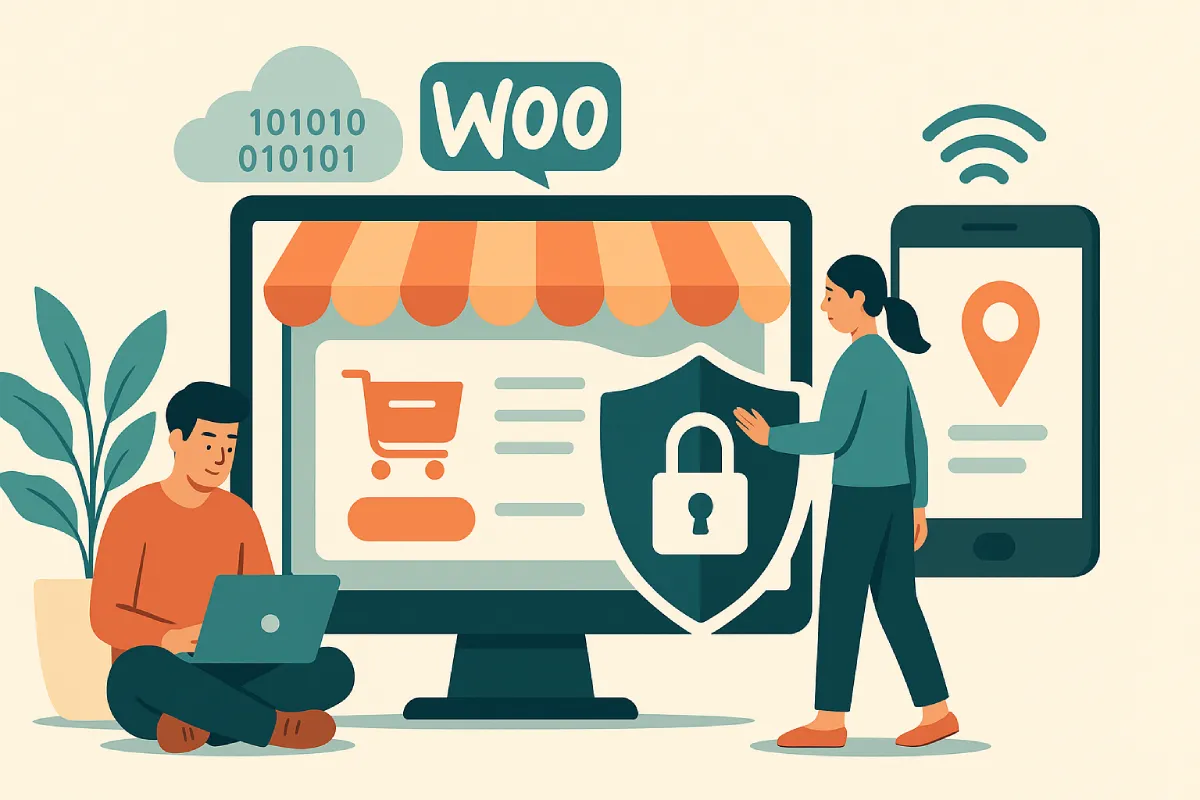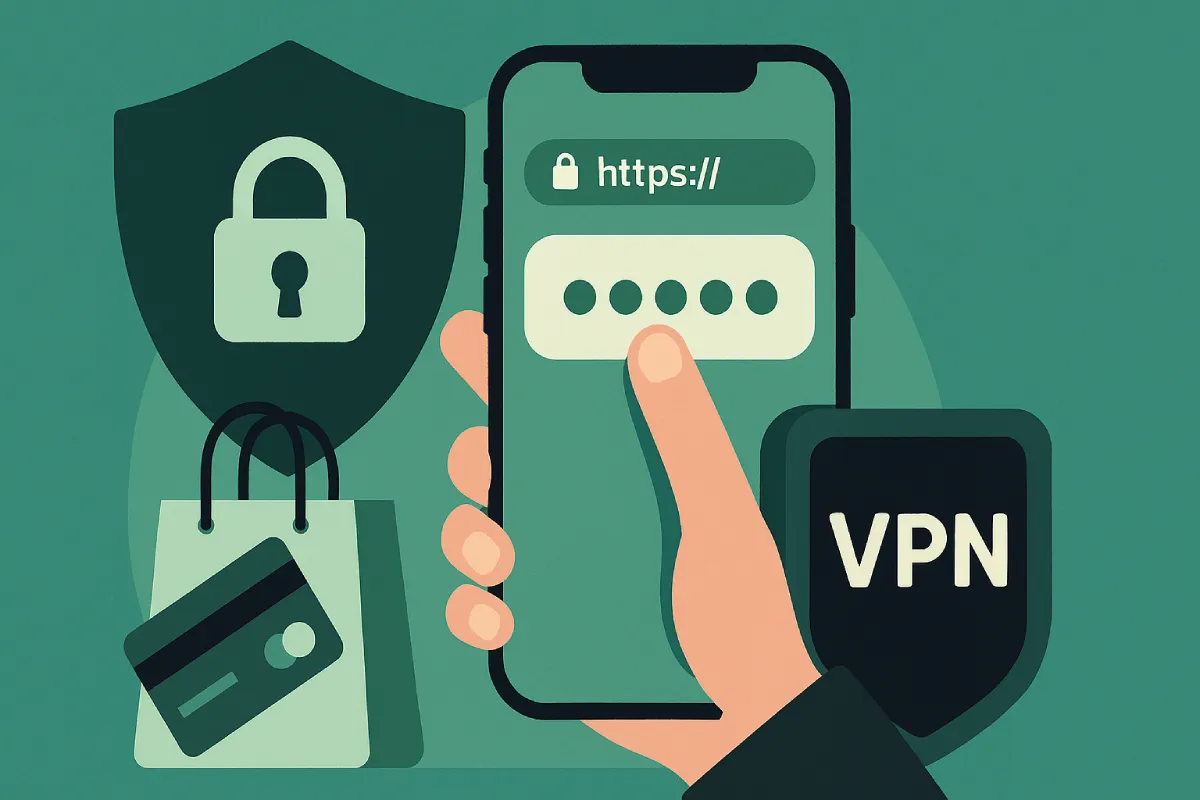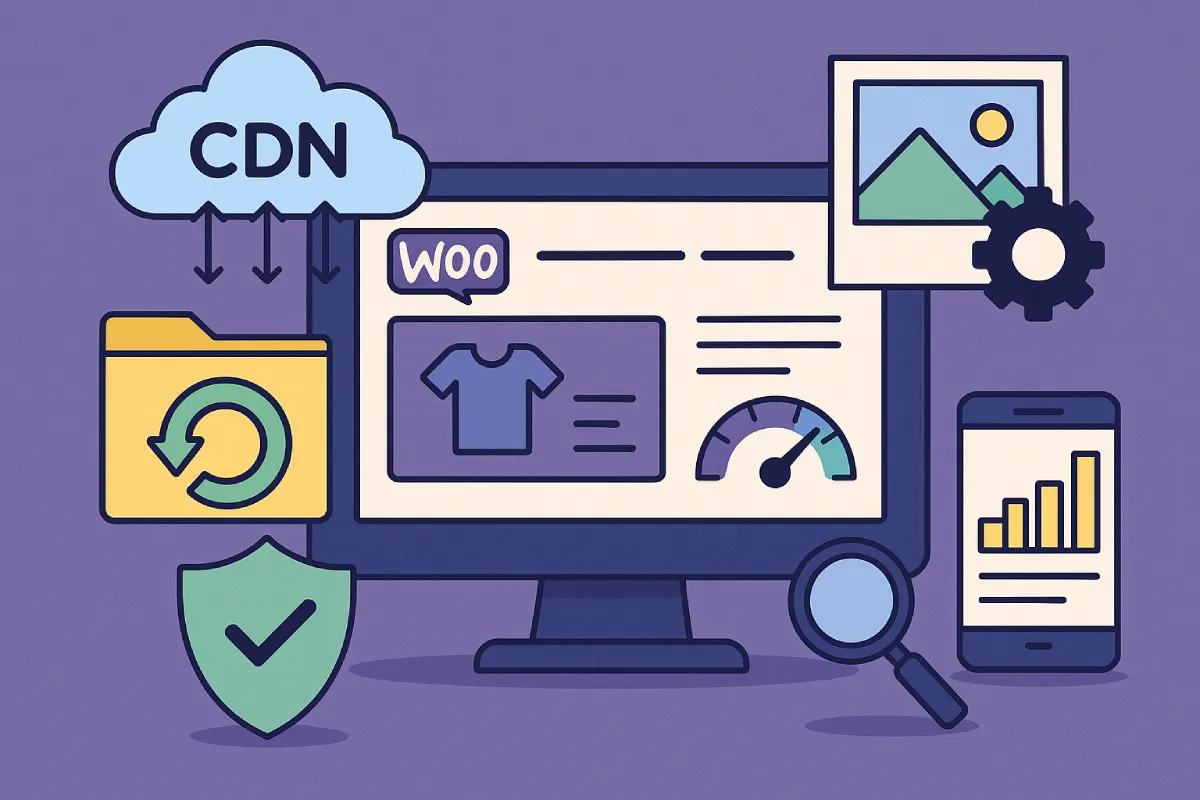Speed Up and Secure Your WooCommerce Store in 2025
Slow load times and data breaches can kill your WooCommerce store faster than any competitor.
As online shoppers become more privacy-conscious and impatient, store owners face mounting pressure to deliver both speed and security. One-second delays can lead to cart abandonment, and any sign of vulnerability erodes customer trust instantly.
In this article, you’ll learn how to boost your WooCommerce store’s performance while hardening its defenses—using the right theme, optimizing your backend, and adding key protection tools like VPNs to safeguard mobile and admin access.
Why Speed and Security Matter More Than Ever
In 2025, eCommerce competition is fiercer than ever. Customers expect lightning-fast load times and ironclad security.
- Performance Impacts Conversion: A delay of even one second can reduce conversions by 7%. Fast load times are now a baseline expectation—especially during checkout, where every second counts.
- Security Breaches Erode Trust: Data leaks, even small ones, can cost customer loyalty permanently. A single breach can lead to account takeover attempts, fraudulent orders, and chargebacks.
Your store’s performance and protection are not separate goals—they’re two sides of the same conversion coin.
Common Speed Bottlenecks in WooCommerce
Several factors can slow down your WooCommerce store:
- Heavy Themes and Plugins: Overly complex themes and bloated plugins increase load times and resource usage. Avoid installing features you don’t actually need—stick to performance-oriented plugins and themes built for speed.
- Unoptimized Images: High-resolution product images can look great but cripple performance. Use modern formats like WebP and compress images without losing visual quality.
- Lack of Caching: Without page caching, your server regenerates pages from scratch on every visit. Tools like WP Rocket or LiteSpeed Cache can cut loading times by over 50%.
- Shared Hosting: If you’re using basic hosting, your site’s performance can be throttled during traffic spikes. Switching to a VPS or managed WordPress hosting often pays off in speed and stability.
Start your optimization by auditing these basics before chasing advanced tweaks.
Choosing a Fast and Secure Theme (Porto Spotlight)
Your WooCommerce theme lays the foundation for everything—speed, layout, responsiveness, and even security.
- Optimized Codebase: Porto is built with clean HTML/CSS/JS, minimizing overhead. You’re not just buying design—you’re buying a performance engine.
- Responsive by Default: Works perfectly on all screen sizes, helping with SEO and mobile conversion.
- Security-Conscious Updates: Frequent updates patch known WordPress and WooCommerce vulnerabilities.
- Lightweight Components: Avoids unnecessary libraries and assets that slow down rendering.
With Porto, you don’t need to choose between aesthetics and performance—it’s engineered for both.
Protect Mobile Customers with SSL, 2FA, and VPN for iPhone
Protecting customer information isn’t just about compliance—it’s about earning trust that leads to repeat purchases.
- SSL Encryption: Every WooCommerce store must run on HTTPS. Without it, browsers flag your site as unsafe, and customers may abandon their cart out of caution.
- Two-Factor Authentication (2FA): If your site allows user accounts, enabling 2FA significantly reduces the risk of credential theft or unauthorized access.
- Proactive Monitoring: Security plugins like Wordfence or Sucuri can detect malware, suspicious login attempts, and other red flags before they become serious problems.
Today, mobile traffic dominates eCommerce—and mobile shoppers often browse and buy from unsecured public Wi-Fi networks.
For iPhone users especially, consider recommending a reliable VPN for iPhone to protect their data during transactions. A VPN encrypts browsing sessions, hides IP addresses, and prevents data interception—essential for safe mobile checkouts. It also communicates that your store cares about privacy and takes active steps to protect customer experiences.
Ensure Security Across Devices: From Customers to Admins
While it’s vital to protect your customers during checkout, it’s just as important to secure the platforms and tools you use to manage your store. Most WooCommerce store owners don’t operate from a single fixed device—they switch between desktops, tablets, and phones to monitor sales, fulfill orders, or respond to customers.
If customer-side security ends at checkout, and admin-side access remains exposed, your entire store remains vulnerable. That’s why site-wide protection—including secure remote login practices—is the next step in building a resilient WooCommerce business.
Secure Remote Access with a VPN: Best Practices for Admins
Store owners often manage their websites on the go—coffee shops, airports, or coworking spaces. These conveniences come with a cost: exposed data.
- Strong Admin Passwords: Use passphrases instead of complex random strings—easier to remember and harder to crack.
- Limit Login Attempts: Block brute-force bots by restricting failed login retries. Many security plugins include this by default.
- Use of VPNs: A trusted VPN encrypts your connection, masking IP addresses and shielding credentials.
Don’t wait until a login gets hijacked—use a VPN whenever logging in from outside your secure network. It’s like locking the door behind you when entering the store.
Final Tips and Tools to Optimize Your Store
Once your theme, security, and core speed issues are handled, these additional layers complete your optimization stack:
- Content Delivery Network (CDN): Distribute images and static files globally to minimize latency. Cloudflare is free and integrates well with WooCommerce.
- Image Optimization: Use tools like ShortPixel or Imagify to bulk-optimize media uploads.
- Regular Backups: Always have a recovery option. Tools like UpdraftPlus automate this.
- Performance Monitoring: GTmetrix, Pingdom, and PageSpeed Insights help pinpoint exact bottlenecks.
Optimization is an ongoing process, not a one-time task. Automate what you can, monitor regularly, and keep improving.
Conclusion
Speed and security aren’t just technical upgrades—they’re your store’s competitive moat.
By using a fast, optimized theme like Porto, applying proven security practices, and integrating protective tools like VPNs, you not only meet user expectations—you exceed them.
And when you manage your store from a mobile device or remote location, a VPN becomes essential—not optional. It protects your access, keeps your credentials safe, and lets you work with peace of mind.



Leave a Reply